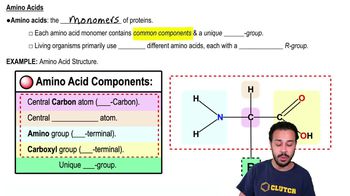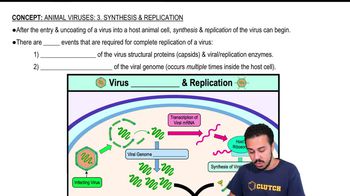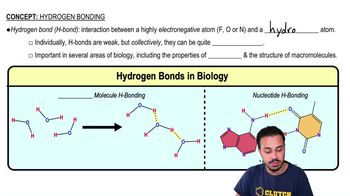Classify the following types of chemical reactions.
<IMAGE>
 Verified step by step guidance
Verified step by step guidance



Classify the following types of chemical reactions.
<IMAGE>
Bacteria use the enzyme urease to obtain nitrogen in a form they can use from urea in the following reaction:
<IMAGE>
What purpose does the enzyme serve in this reaction? What type of reaction is this?
The best definition of ATP is that it is
a. a molecule stored for food use.
b. a molecule that supplies energy to do work.
c. a molecule stored for an energy reserve.
d. a molecule used as a source of phosphate.
Use the following diagrams (a), (b), and (c) for question 1.
<IMAGE>
Name pathways diagrammed in parts (a), (b), and (c) of the figure.
a. Show where glycerol is catabolized and where fatty acids are catabolized.
b. Show where glutamic acid (an amino acid) is catabolized:
<IMAGE>
c. Show how these pathways are related.
d. Where is ATP required in pathways (a) and (b)?
e. Where is CO₂ released in pathways (b) and (c)?
f. Show where a long-chain hydrocarbon such as petroleum is catabolized.
g. Where is NADH (or FADH₂ or NADPH) used and produced in these pathways?
h. Identify four places where anabolic and catabolic pathways are integrated.
DRAW IT What nutritional type is a colorless microbe that uses the Calvin-Benson cycle, uses H₂ as the electron donor to its ETC, and uses elemental S as the final electron acceptor in the ETC?
Which substance in the following reaction is being reduced?
<IMAGE>
a. acetaldehyde
b. NADH
c. ethanol
d. NAD⁺